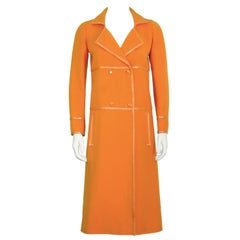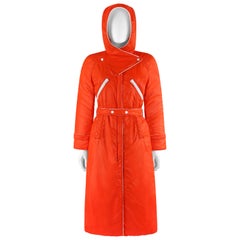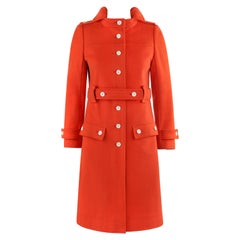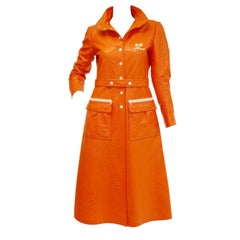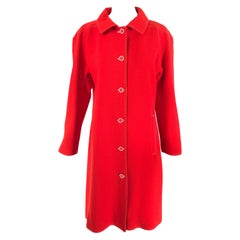Courreges Orange Coat
1960s French Coats
1970s French Coats
1970s French Coats
Recent Sales
1970s French Jackets
20th Century French Coats
20th Century French Coats and Outerwear
1970s French Coats and Outerwear
1980s French Coats
1960s French Coats
1960s French Coats and Outerwear
1980s French Swing Coats
1960s French Coats
1970s French Coats and Outerwear
1970s French Coats and Outerwear
Early 2000s French Bomber Jackets
20th Century French Trench Coats
1960s French Coats
1960s French Trench Coats
1970s French Capes
1970s French Jackets
1970s French Day Dresses
1970s French Coats
1970s French Coats
1960s Coats and Outerwear
1960s French Dress and Coat Ensembles
People Also Browsed
1960s French Skirt Suits
1960s Hong Kong Cocktail Dresses
1960s French Day Dresses
1960s Unknown Cocktail Dresses
Early 2000s French Cocktail Dresses
1950s Unknown Ballerina Dresses
1960s Cocktail Dresses
1960s Coats
1950s American Ballerina Dresses
1920s Unknown Evening Dresses
1960s American Cocktail Dresses
Early 2000s French Jackets
1950s British Cocktail Dresses
Early 2000s French Cocktail Dresses
1970s French Suits, Outfits and Ensembles
1960s Swiss Evening Dresses and Gowns
Courreges Orange Coat For Sale on 1stDibs
How Much is a Courreges Orange Coat?
André Courrèges for sale on 1stDibs
Revolutionary couturier André Courrèges made a name for himself on the buzzy Paris fashion scene of the 1960s with audacious Space Age designs that pointed to the future. The world of haute couture credits him with toppling the conservative standards assigned to feminine clothing back then and propelling a movement that celebrated a more revealing brand of women's attire — including chic miniskirts, his iconic white ankle boots and often whimsical dresses with necklines that turned heads.
While vintage André Courrèges suits, jackets and other apparel garnered the designer ample praise, he wasn’t confined to producing clothing. He is also widely revered for creating some of the era’s most stylish accessories, like his offbeat, goggles-esque sunglasses and distinctive scarves, which boasted lively patterns and an alluring range of Pop art colors and pastels.
Born in the French Pyrenees, Courrèges wanted to become an artist at an early age, but his father steered him into engineering. Though successful as an engineer, Courrèges pivoted to fashion. He moved to Paris and worked briefly for couturiere Jeanne Lafaurie. In 1948, he took a job with Cristóbal Balenciaga, and within a couple of years, he had ascended to the role of Balenciaga’s first assistant.
While working for Balenciaga, Courrèges met dressmaker Coqueline Barrière, whom he would later marry. In 1961, the couple established their own fashion house, where they collaborated as creative partners for the remainder of the designer’s life.
Courrèges was among the designers who ushered in the rise of ready-to-wear. He favored figure-hugging silhouettes and geometric shapes, and looked to the work of architect Le Corbusier — a like-minded proponent of simplicity and clean lines.
Alongside innovators such as Mary Quant, Paco Rabanne and Pierre Cardin — the latter's futuristic looks were catnip for the free-spending consumers of the postwar years — Courrèges explored ways to outfit women with comfortable everyday wear, working with forward-looking materials such as plastic and polyvinyl chloride in his unadorned dresses of stark white. Mexican socialite and Harper’s Bazaar editor Gloria Guinness, pop star Françoise Hardy and former First Lady Jacqueline Kennedy were among some notable names to wear Courrèges originals.
By the mid-1960s, Courrèges had risen to the top of his industry, and there were many imitators. He took strict control of production at his namesake label, only allowing distribution through licensed sellers. He and Coqueline sold off part of the company in 1968 to L'Oreal, and by the early 1970s, Courrèges had more than 100 boutiques worldwide, also expanding into fragrances and menswear.
In 1983, the couple restored themselves to full ownership of the company and in 2011 sold the brand to French advertising executives Jacques Bungert and Frédéric Torloting. Artémis, which controls the global luxury group Kering, acquired a minority stake in the Courrèges brand in 2015 and took full control three years later.
Find vintage André Courrèges clothing, purses and other items on 1stDibs.
Finding the Right Coats-outerwear for You
There is a stylish garment for anywhere in the universe, and on 1stDibs, finding the right vintage and designer coats and outerwear doesn’t have to feel like a journey to the ends of the earth.
Outerwear includes many types of garments aside from the standard coat. From capes, gilets, jackets and cloaks to raincoats and kimonos, fashion designers have long been preparing us for the elements, and outerwear in general has changed and evolved significantly over time.
A lot of the coat styles in our closets, such as the durable Navy-inspired peacoat, were popularized by soldiers who battled aggressive climes in their regulation field jackets and parkas — indeed, keeping troopers comfortable guided the design of the military surplus garments that have often become buzzy fashion trends. Even today, owing to the likes of Burberry, a luxury fashion house that is among the originators of the trench coat worn by British officers during World War I, the trench remains a timeless style, now available in a range of colors that can be worn throughout the year.
While women in late 1700s England donned an adaptation of a men’s jacket called a spencer — the likeness of which could be spotted in Ralph Lauren’s ready-to-wear collections hundreds of years later — designers hadn’t widely been crafting outerwear specifically for women. Generally, the outerwear of choice for the fashionable, well-heeled lady prior to the 1800s usually consisted of capes, shawls and stoles. By the mid-1800s, women were wearing overcoats with multiple layered collars popularized by men (often called a Garrick coat in England), and as women entered the workforce during the 1920s, hemlines climbed, jewelry was prominent and fashion conventions were broken across the board.
Thankfully, the 20th century’s tradition of challenging the norm continues steadfast in today’s outerwear fashions. Contemporary designers certainly find inspiration in 1960s and 1970s coats by Pierre Cardin, Yves Saint Laurent and Bonnie Cashin, but unisex options abound in modern creations that take both function and style into account. Find what inspires you in the full range of vintage and designer coats and outerwear available for sale on 1stDibs.
